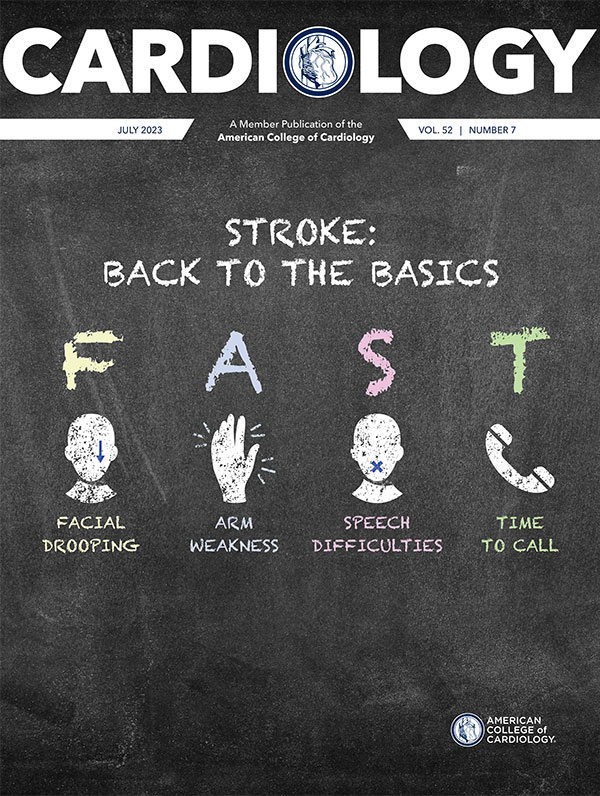Peripheral Matters | Pulmonary Embolism: State of the Union and Future Directions

Acute pulmonary embolism (PE) remains a significant etiology of morbidity and mortality in the U.S., responsible for up to 300,000 deaths annually and with in-hospital mortality rates approaching 30% in the highest risk cases.1 More recently, there has been a movement towards performing rigorous research and standardizing practices to studying this deadly disease. Data regarding PE is rapidly evolving, and the landscape continues to shift with new technologies and treatments emerging continuously. This review aims to provide a summary of the current treatment paradigms for those with intermediate-high- and high-risk PE, and to discuss ongoing trials that will shape the future of PE care.
Risk Stratification
The American Heart Association (AHA) and European Society of Cardiology (ESC) provide risk stratification systems for patients presenting with acute PE.2,3 Patients with high-risk (ESC) or massive (AHA) PE are those with hemodynamic instability, characterized by cardiac arrest, a systolic blood pressure <90 mm Hg, hypotension requiring vasopressor support, or a decrement of the systolic blood pressure >40 mm Hg for at least 15 minutes. Intermediate-risk (ESC) or submassive (AHA) PE pertains to patients with right ventricular (RV) dysfunction evidenced by imaging or by elevation in cardiac biomarkers. The ESC further stratifies intermediate-risk PE into intermediate-low risk (RV dysfunction or elevation in cardiac biomarkers) and intermediate-high-risk (RV dysfunction in addition to elevation in cardiac biomarkers). For the purposes of this review, we will focus on patients with intermediate- and high-risk PE.
Current Treatment Paradigms
Current guidelines continue to recommend anticoagulation as the mainstay for treatment for PE and should be initiated in all patients with PE regardless of severity (AHA: IA; ESC: Class IC).2,3 As patients escalate in the severity of their PE presentation from low to intermediate risk, more advanced PE therapies should be considered with the use of systemic thrombolysis, catheter-based therapies, surgical embolectomy, or mechanical circulatory support only if there is progressive deterioration in hemodynamic or respiratory status. In cases of high-risk PE, the guidelines continue to recommend systemic thrombolysis with intravenous tissue plasminogen activator (tPA) as first-line therapy (AHA: Class IIA; ESC: Class IB) and to consider catheter-based therapies or alternative strategies, including catheter-directed thrombolysis (CDT), aspiration thrombectomy (AT) or surgical embolectomy (SE), only in cases in which systemic thrombolysis is contraindicated or has failed.
As we enter a renaissance in PE studies, the guidelines cannot possibly adjust quickly enough to account for the degrees of iterations in new technologies and strategies in contemporary PE care. Current PE studies can be separated into those involving either intermediate-risk patients, high-risk patients or both. In the intermediate group, previous data have reported on the role of routine systemic thrombolytics, which have been shown to reduce the risk of decompensation but at the significant risk of bleeding and is generally not recommended for routine administration.4 Alternatively, the use of catheter-based strategies including CDT as well as AT have shown promising results (Table 1). However, many of these trials were single-arm prospective trials with their primary endpoint being right ventricular/left ventricular (RV/LV) size ratio and lacked hard clinical endpoints.
The current data in high-risk PE remains even harder to interpret given many of these trials were confounded by studies including mixed populations of intermediate- and high-risk PE, single-arm prospective trials, or the presence of cardiac arrest. For instance, the mortality rate associated with extracorporeal membrane oxygenation use following CPR is substantially higher than without preceding CPR (41% vs. 9%).5 Similar mortality data have been reported in patients undergoing SE based on preoperative CPR status, with a rate of 21.7% following cardiac arrest vs. 1.7% without cardiac arrest.6
The most recent data for high-risk PE patients comes from the FLAME trial demonstrating that the use of AT with the Flowtreiver showed a substantial difference in 30-day mortality (1.9%) vs. those who received alternative therapy (29.5%). Further, the incidence of major bleeding was 11.3% in the FlowTriever arm compared with 24.6% in the alternative therapy arm.7 This may suggest a larger role for catheter-based strategies to be considered upfront in high-risk PE in conflict with current guidelines.
Frontiers in the Treatment of PE
There are many important studies ongoing in the field of PE that are outside the scope of this review. However, there are two studies that are highly anticipated that will have a near future impact on PE care: HI-PEITHO and PEERLESS (Table 2).
While increased bleeding was found in the use of routine systemic thrombolysis in intermediate-risk PE, almost all CDT data to date report lower rates of intracranial hemorrhage. Thus, it is currently unknown whether routine use of ultrasound-assisted CDT in intermediate-risk patients could provide similar benefits with lower bleeding rates. This question is currently being studied in the HI-PEITHO trial, a randomized controlled trial with intermediate-risk PE patients assigned in a 1:1 fashion to receive anticoagulation plus ultrasound-assisted thrombolysis or anticoagulation alone. The study will aim to enroll >400 patients and will utilize a composite primary outcome of PE-related mortality, cardiopulmonary decompensation/collapse, or nonfatal symptomatic or objectively confirmed PE recurrence within seven days of randomization. Several safety outcomes and patient-reported outcomes will also be reported. At its conclusion, the results of HI-PEITHO should be able to answer whether routine use of an advanced therapy (in this case ultrasound-assisted CDT) should be considered in patients with intermediate-risk PE.
As alluded to above, there are several modalities in the armamentarium of PE. To that end, the PEERLESS trial is the first randomized controlled trial to study CDT vs. mechanical thrombectomy in intermediate-risk PE. The study will randomize 550 patients with intermediate-high risk PE who have suitable anatomy to undergo either AT with FlowTriever or CDT, or to a nonrandomized third registry arm for patients who are not eligible for CDT. The primary outcome is a composite of all-cause mortality, intracranial hemorrhage, major bleeding, clinical deterioration, ICU admission and length of hospital stay. This study will highlight the differences between two advanced therapies for PE and may direct first-line therapy for intermediate risk PE patients in the future.
Future Directions
As HI-PEITHO and PEERLESS investigate current U.S. Food and Drug Administration approved devices and their role in intermediate-risk PE, there is a wealth of innovation occurring in the PE field with multiple new devices being developed, including the Viper Catheter System in the ENGULF trial (NCT05597891) (Endovascular Engineering, Menlo Park, CA), the eTrieve Pulmonary Embolism Kit in the Evaluation of the Safety and Performance of Magneto PE Kit trial (NCT04949048) (Magneto Thrombectomy Solutions, Tel Aviv, Israel), and a wealth of other thrombectomy catheters poised to be studied in the PE space. These newer devices will further add to the options for treatment in intermediate-risk PE. Regarding high-risk PE, it remains challenging to perform randomized controlled trials given the sporadic nature of the disease. However, ongoing research utilizing the PERT consortium data housing the largest contemporary experience across multiple international centers should offer insight into current trends in the treatment and outcomes of patients presenting with high-risk PE.
Conclusion
There is a wealth of data that continues to arise in the field of PE with ongoing trials studying the role of advanced therapies (both existing and new innovative technologies) further upstream in the treatment algorithm for intermediate-risk PE. More research is needed in high-risk patients and ongoing trials through the PERT Consortium Registry should provide insight into this deadly disease.



This article was authored by Brian Fulton, MD; Jay S. Giri, MD, MPH; and Taisei Kobayashi, MD, FACC, from the Division of Cardiovascular Medicine, Hospital of the University of Pennsylvania, Philadelphia PA.
References
- Silver MJ, Giri J, Duffy Á, et al. Incidence of mortality and complications in high-risk pulmonary embolism: A systematic review and Meta-Analysis. J Society Cardiovasc Angiography Interventions 2023;2:100548.
- Jaff MR, McMurtry MS, Archer SL, et al. Management of massive and submassive pulmonary embolism, iliofemoral deep vein thrombosis, and chronic thromboembolic pulmonary hypertension. Circulation 2011;123:1788-1830.
- Konstantinides SV, Meyer G, Becattini C, et al. 2019 ESC guidelines for the diagnosis and management of acute pulmonary embolism developed in collaboration with the European Respiratory Society (ERS): The Task Force for the diagnosis and management of acute pulmonary embolism of the European Society of Cardiology (ESC). Eur Heart J 2019;41:543-603.
- Meyer G, Vicaut E, Danays T, et al. Fibrinolysis for patients with intermediate-risk pulmonary embolism. N Engl J Med 2014;370:1402-11.
- Goldberg JB, Giri J, Kobayashi T, et al. Surgical management and mechanical circulatory support in high-risk pulmonary embolisms: Historical context, current status, and future directions: A scientific statement from the American Heart Association. Circulation 2023;147:e628-e647.
- Goldberg JB, Spevack DM, Ahsan S, et al. Survival and right ventricular function after surgical management of acute pulmonary embolism. J Am Coll Cardiol 2020;76:903-11.
- Silver M. Outcomes in high-risk pulmonary embolism undergoing FlowTriever mechanical thrombectomy: Results from the FLAME Study. Presented at American College of Cardiology Scientific Session 2023. Available here. https://www.acc.org/ACCAnywhere.
- Piazza G, Hohlfelder B, Jaff MR, et al. A prospective, single-arm, multicenter trial of ultrasound-facilitated, catheter-directed, low-dose fibrinolysis for acute massive and submassive pulmonary embolism: The SEATTLE II study. JACC Cardiovasc Interv 2015;8:1382-92.
- Kuo WT, Banerjee A, Kim PS, et al. Pulmonary embolism response to fragmentation, embolectomy, and catheter thrombolysis (PERFECT): Initial results from a prospective multicenter registry. Chest 2015;148:667-73.
- Kucher N, Boekstegers P, Müller OJ, et al. Randomized, controlled trial of ultrasound-assisted catheter-directed thrombolysis for acute intermediate-risk pulmonary embolism. Circulation 2014;129:479-86.
- Bashir R, Foster M, Iskander A, et al. Pharmacomechanical catheter-directed thrombolysis with the Bashir endovascular catheter for acute pulmonary embolism: the RESCUE Study. JACC: Cardiovasc Interv 2022;15:2427-36.
- Tu T, Toma C, Tapson VF, et al. A prospective, single-arm, multicenter trial of catheter-directed mechanical thrombectomy for intermediate-risk acute pulmonary embolism: The FLARE study. JACC: Cardiovasc Interv 2019;12:859-69.
- Toma C, Jaber AW, Weinberg DM, et al. Acute outcomes for the full US cohort of the FLASH mechanical thrombectomy registry in pulmonary embolism. EuroIntervention 2023;18:1201-12.
- Sista AK, Horowitz JM, Tapson VF, et al. Indigo aspiration system for treatment of pulmonary embolism. JACC: Cardiovasc Interv 2021;14:319-29.
- Donaldson CW, Baker JN, Narayan RL, et al. Thrombectomy using suction filtration and veno-venous bypass: Single center experience with a novel device. Catheter Cardiovasc Interv 2015;86:E81-87.
Clinical Topics: Anticoagulation Management, Arrhythmias and Clinical EP, Cardiac Surgery, Cardiovascular Care Team, Invasive Cardiovascular Angiography and Intervention, Sports and Exercise Cardiology, Vascular Medicine, SCD/Ventricular Arrhythmias, Cardiac Surgery and Arrhythmias, Interventions and Vascular Medicine
Keywords: ACC Publications, Cardiology Magazine, Cardiovascular Diseases, Cardiologists, Noncommunicable Diseases, Return to Sport, Sports, Death, Sudden, Cardiac, Cardiology, Surgeons, Athletes, Cardiopulmonary Resuscitation, Pulmonary Embolism, Hemorrhage, Intracranial Hemorrhages, Thrombectomy, Catheters, Thrombolytic Therapy, Registries, Anticoagulants, Patient Reported Outcome Measures, Algorithms, Intensive Care Units
< Back to Listings



